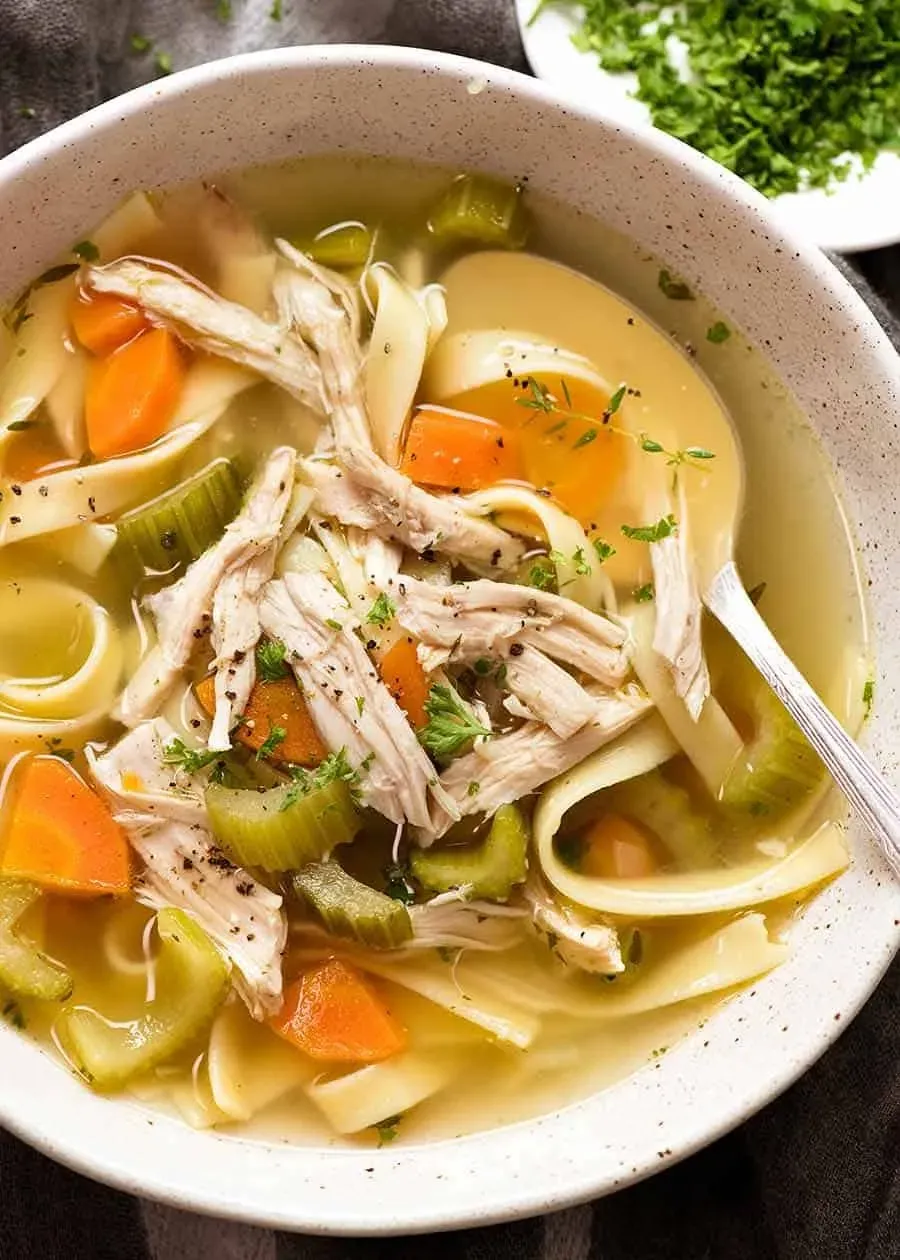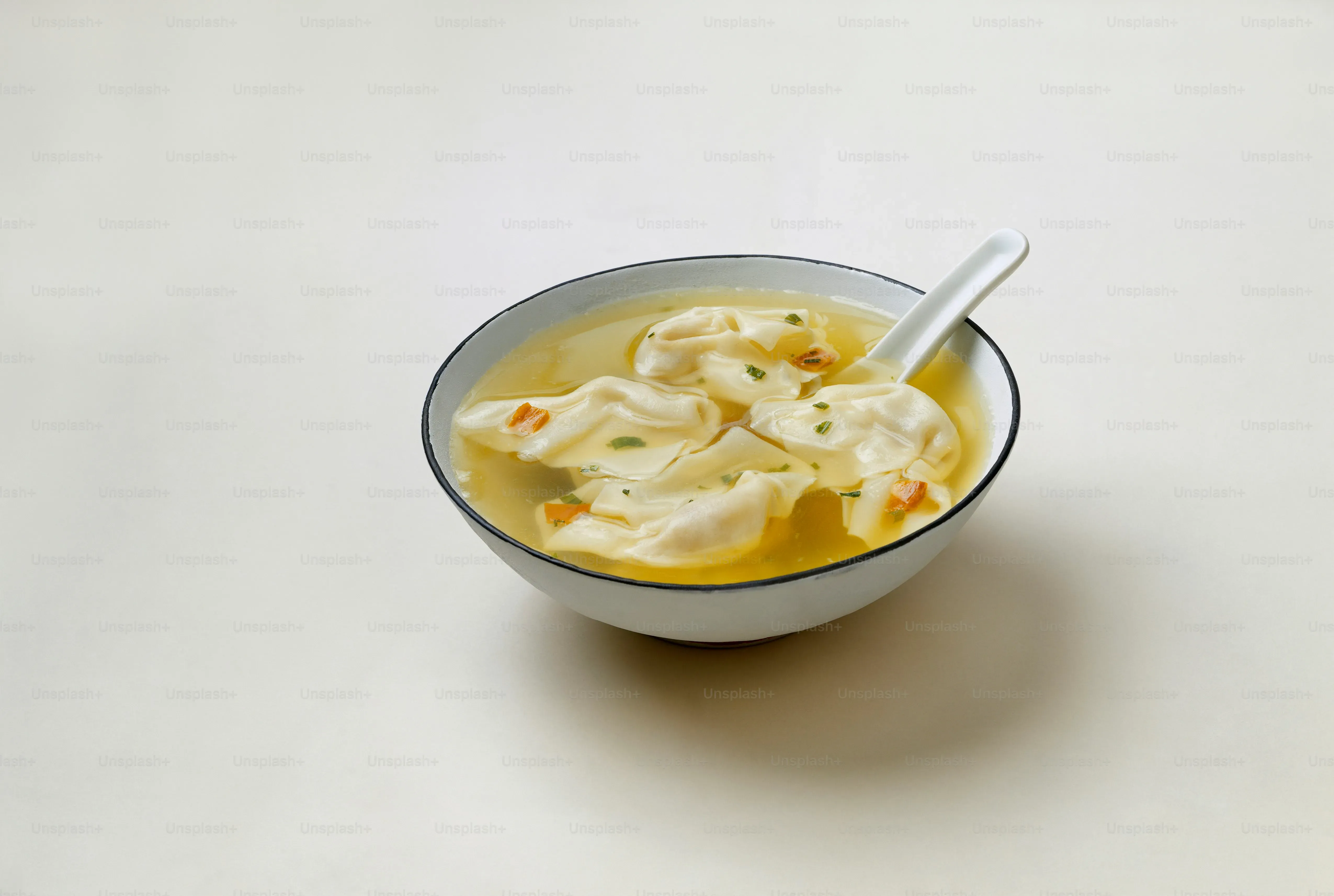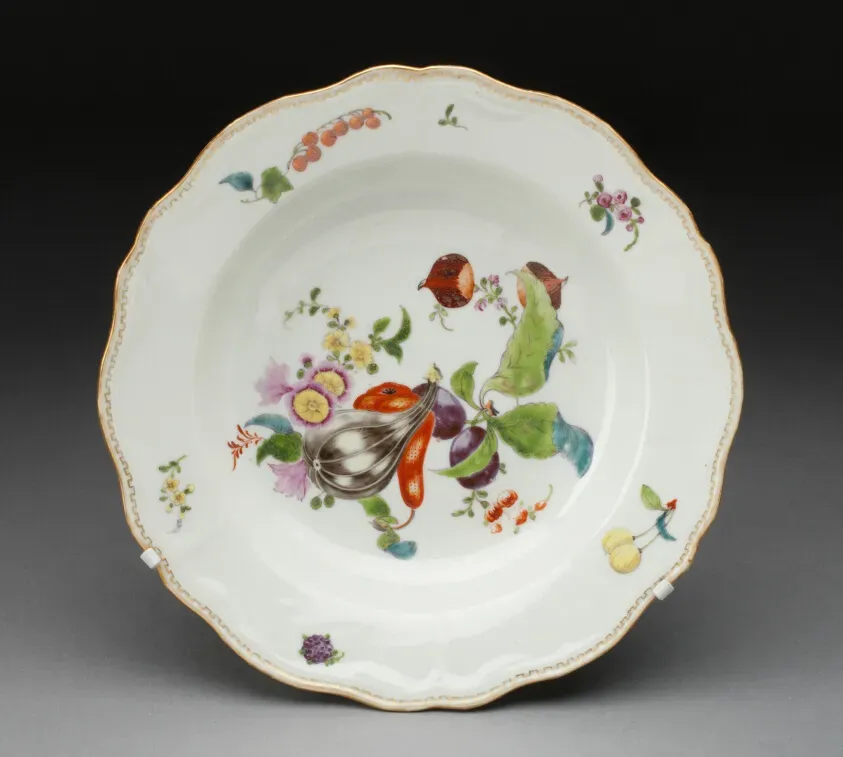Table of Contents
Forget those sad, watery versions from a can. When you're feeling a bit rough around the edges, or maybe just craving something genuinely comforting, nothing quite hits the spot like a steaming bowl of chicken noodle soup. But not just any chicken noodle soup. We're talking about the kind that warms you from the inside out, the kind with a broth so rich and flavorful it tastes like a hug. That kind comes from making it from scratch, starting with a whole chicken. This isn't a weeknight dash-and-dump situation; making a proper whole chicken noodle soup recipe takes a little time, sure, but the depth of flavor you get is simply unmatched by bouillon cubes and pre-cooked chicken. Think of it as an investment in your comfort and well-being. In this guide, we'll walk you through turning a humble bird into golden liquid gold, tackling everything from simmering that whole chicken to getting those noodles just right. Get ready to elevate your soup game significantly.
Making the Rich Broth: The Heart of Your Whole Chicken Noodle Soup Recipe

Making the Rich Broth: The Heart of Your Whole Chicken Noodle Soup Recipe
Alright, let's talk about the real secret sauce – the broth. Anyone can dump some chicken pieces and water in a pot, but if you want that deep, soul-satisfying flavor, you *have* to start with a whole chicken. This is where the magic happens for your whole chicken noodle soup recipe. Using the bones, connective tissue, and some meat creates a gelatinous, nutrient-rich base that simply can't be replicated with just chicken breasts or store-bought stock. You're essentially extracting all that incredible flavor and goodness by simmering the bird low and slow. Don't boil it like you're trying to melt metal; a gentle simmer is key to keeping the broth clear and flavorful, not cloudy and greasy. Toss in some simple aromatics like onion, carrots, celery, and maybe a bay leaf or a few peppercorns. Let it bubble gently for at least 1.5 to 2 hours, maybe even longer if you have the time. That long simmer pulls everything wonderful out of the chicken and veggies.
What goes into a classic broth base?
- A whole chicken (about 3-4 pounds)
- Roughly chopped onion (skin on is fine for color)
- Carrots, snapped or roughly chopped
- Celery stalks, roughly chopped
- Bay leaves
- Whole black peppercorns
- Maybe a sprig of fresh thyme or parsley
Prepping the Good Stuff: Veggies, Chicken, and Noodles

Prepping the Good Stuff: Veggies, Chicken, and Noodles
Once that gorgeous, golden broth has simmered and you've strained out the solids, you're left with the foundation for your whole chicken noodle soup recipe. Now it's time to add the stars of the show: the tender chicken and the classic soup veggies. While your broth was simmering, you can let the chicken cool slightly, then pull the meat from the bones. Shred or chop it into bite-sized pieces – don't toss those bones yet, they can make another batch of stock later if you're thrifty! For the vegetables, think classic mirepoix: carrots, celery, and onion, but cut them into nice, uniform pieces so they cook evenly and look good in the bowl. Sautéing these in a little butter or olive oil before adding them to the soup is a game-changer; it softens them slightly and brings out their sweetness, adding another layer of flavor to your incredible broth.
Bringing It All Together: Finishing Your Delicious Whole Chicken Noodle Soup

Bringing It All Together: Finishing Your Delicious Whole Chicken Noodle Soup
Adding the Flavor Foundation
you've got that beautiful, strained broth, clear and shimmering. You've got your sautéed veggies, smelling fantastic after their little butter bath. This is where the magic really starts for your whole chicken noodle soup recipe. Carefully pour that golden broth back into a clean pot. Add your softened carrots, celery, and onion. Bring the soup back up to a gentle simmer over medium heat. You're not aiming for a rolling boil here; that just makes things cloudy and can break down your ingredients too much. A happy, low bubble is what you want. Let those veggies cook in the broth for about 10-15 minutes, or until they're tender but not mushy. You want them to still have a little bite, a little structural integrity. Nobody likes a vegetable puree disguised as soup.
Introducing the Stars: Chicken and Noodles
Now for the main event: the chicken and the noodles. Add your shredded or chopped chicken back into the pot. Since the chicken is already cooked, you just need to heat it through. Simultaneously, toss in your noodles. The type of noodle matters. Classic egg noodles are traditional and hold up well, but you could use ditalini, elbows, or even broken spaghetti if you're feeling rebellious. Cook the noodles according to the package directions, right there in the simmering soup. This lets them soak up all that amazing broth flavor as they cook. Keep an eye on them; overcooked noodles are a crime against soup humanity. Taste and season with salt and freshly ground black pepper. You might need more salt than you think, as the noodles will absorb some. This is your last chance to adjust the flavor before serving this magnificent whole chicken noodle soup recipe.
What kind of noodles work best?
- Classic wide egg noodles
- Medium egg noodles
- Ditalini (those tiny tubes)
- Elbow macaroni
- Or even some broken vermicelli
Serving, Storing, and Variations on Your Whole Chicken Noodle Soup

Serving, Storing, and Variations on Your Whole Chicken Noodle Soup
Serving Up Comfort
the moment of truth. You've put in the work to craft this magnificent whole chicken noodle soup recipe, and now it's time to reap the rewards. Ladle generous portions into bowls. Don't be shy. This isn't diet food; it's soul food. A little sprinkle of fresh parsley or dill over the top adds a pop of color and freshness, cutting through the richness just enough. Serve it steaming hot, maybe with some crusty bread on the side for dipping – because really, is there any other way? Watch people inhale it. There's a quiet satisfaction in knowing you made something this good from scratch, something that genuinely makes people feel better, even if they aren't actually sick.
Keeping the Goodness Going: Storing Leftovers
If you're lucky enough to have leftovers of your whole chicken noodle soup, proper storage is key. Let the soup cool down completely before transferring it to airtight containers. Sticking a hot pot directly into the fridge is just asking for bacterial trouble and warms up everything else in there. Once cooled, it will keep in the refrigerator for about 3 to 4 days. For longer storage, freezing is your friend. Portion it out into freezer-safe containers or bags, leaving a little headspace as liquid expands when it freezes. It will last for several months in the freezer. Just thaw it overnight in the fridge or gently reheat on the stovetop when you're ready for another round of comfort. Be aware that noodles can sometimes get a little softer after freezing and reheating, but the glorious broth makes up for it.
- Cool completely before storing.
- Use airtight containers.
- Refrigerate for up to 3-4 days.
- Freeze for several months.
- Thaw in the fridge or reheat gently.
Mixing It Up: Simple Variations
While the classic whole chicken noodle soup recipe is perfect as is, don't be afraid to play around a bit. Want more veggies? Toss in some peas, corn, green beans, or even some finely chopped zucchini towards the end of cooking. Like a little kick? A pinch of red pepper flakes can wake things up. Some folks swear by adding a splash of lemon juice or a knob of ginger for brightness, especially if they're fighting a cold. You could swap the egg noodles for a different pasta shape, or even rice or dumplings for a different texture. It's your soup; make it your own. The beautiful thing about starting with such a solid, homemade broth is that it provides a fantastic canvas for whatever additions you fancy.
Putting a Lid on It
So there you have it. Starting with a whole chicken for your noodle soup isn't the fastest route to dinner, that much is clear. But you went through the steps: making the broth, pulling the meat, adding the vegetables and noodles. What you end up with is something far removed from the canned stuff you might grab in a hurry. It’s soup that tastes like you actually made it, because you did. It's a tangible result of a little effort, and sometimes, especially when you're feeling under the weather or just need something solid, that's exactly what the doctor ordered. No magic involved, just cooking.
